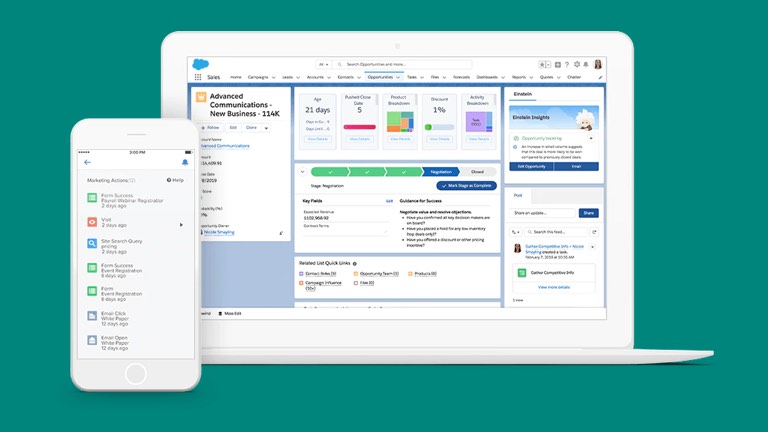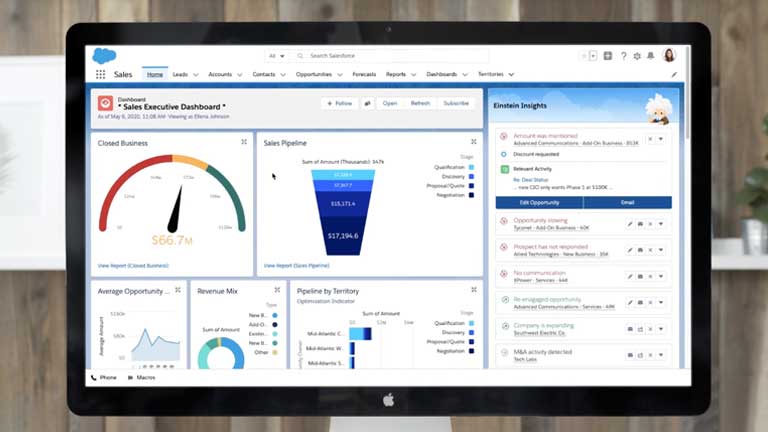How Salesforce Measures Its Most Important Sales Metrics
Learn why we constantly track and evaluate our pipeline and annualized contractual value (ACV).
Time to read: 3 minutes
EVP, Salesforce, CRO Quip (formerly)
Every sales organization should have one metric that’s considered the most important measure. It sounds obvious, but it’s always surprising to me how companies become distracted with so many other details and metrics that aren’t true drivers of their business.
At Salesforce, our most important sales metric is annualized contractual value, or ACV. This number is the sum of new or add-on opportunities. ACV is followed closely by pipeline. The first doesn’t happen without the second, yet pipeline without the ability to become ACV isn’t beneficial.
To sell successfully you need a lot of things: a great offering, the right people, great manager ratios, and so on, but most importantly you need pipeline — and there’s never enough pipeline. That pipeline needs to be real and you need to understand what that pipeline’s made of to consistently meet or exceed your revenue targets.
This is relevant for all sales organizations and it’s what we spend the majority of our time focused on in our business. We believe strongly that you can’t manage what you don’t measure so we track and evaluate our pipeline and ACV constantly.
All pipeline, all the time
We like our managers to examine and inspect pipeline constantly. They need to review the overall pipeline targets to best understand what’s going on, and whether the numbers are big enough to get to where they need to finish.
Assuming the total pipeline is at an appropriate level, what does that pipeline consist of? Are they small transactions, add-on business, new business, or large complex deals? Is there a healthy balance? Is there consistency among the account executives? Is the timing of the opportunities appropriate?
If it’s a newer account executive (AE) ramping up, what’s the expectation of their pipeline versus that of a seasoned veteran? What’s the specific expectation for both and are they well aware of it? If they’re not meeting those expectations, something’s wrong and needs to be corrected. They either aren’t trained properly or they’re not doing the activities that we find to be most effective. The earlier you can find these hot spots, the faster they can be corrected.
As good as your last month
We also enforce a “making every month” sales methodology. It’s a cultural thing and it drives the consistency and cadence of our business. It’s not about a deal or quarter or year. It’s always “how’s your month?” It’s hard to do consistently, but it helps people stay on track for their year.
Let’s say, for example, an account executive needs to sell $300,000 per quarter. If they wait until that last month and are dependent on one or two transactions, there is a high likelihood that their $300,000 could slip out. Even with the perfect deal strategy, things come up that might delay or kill one specific transaction. Setting a cadence of productivity every month helps to hedge the downside risk of having all your eggs in one quarterly deal.
A consistent monthly pipeline allows for a more steady flow of business and decreases the need for that one big end-of-month hit. When you are banking on just one large opportunity to fulfill your quarter, more often than not that deal slips out of the month or is never as big as you expected.
Not closing it alone
Another benefit of consistently inspecting pipeline is that various opinions may result in a different (better) approach to any particular transaction. It’s easy to get happy ears and dream about a big deal, but we prefer to get multiple eyes on our pipeline for deeper inspection. Various opinions by a manager, executive sponsor, or perhaps the solutions engineering team often stimulates the right conversation about potential blind spots to closing a deal.
For example, does the account team have the proper executive sponsorship within the customer, is there a mutual plan with consistent timing, are there outside factors that might impact the scope or timing of the deal? It’s important to constantly scrub our pipeline and ask questions to better understand what’s actually real and where we need to develop more pipeline.
We are focused on a team-selling approach and it’s very much a part of our sales culture. The team-selling approach includes input from direct line managers, product development, executive sponsors, solutions engineers, co-primes, product specialists, and product marketers, all with the goal of working together to grow our customer base and make them wildly successful.
Have total transparency
“To sell successfully you need a lot of things, but most importantly you need pipeline — and there’s never enough pipeline.”

Article
Five Proven Methods for Driving Sales Excellence

Products

Article
Why Forecasting and Pipeline Management Are (and Should Be) Two Different Things
More Resources

Webinar

Article

Demo


